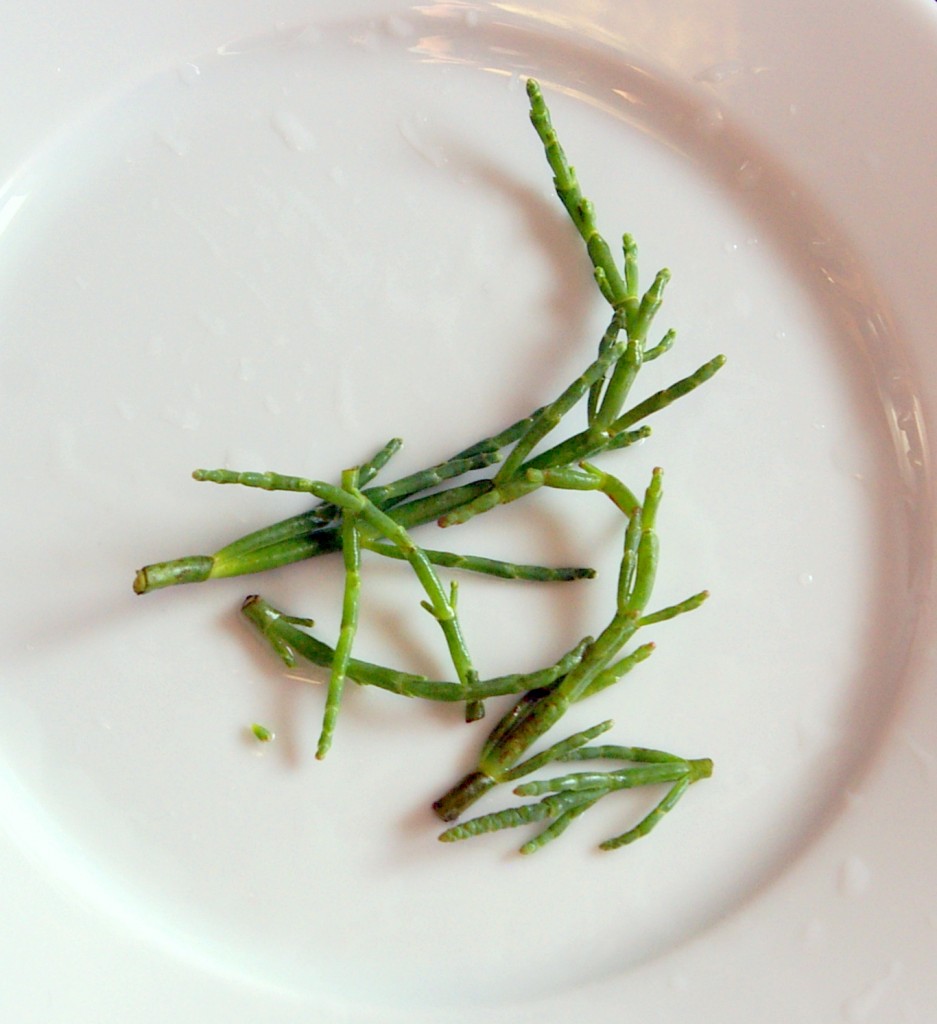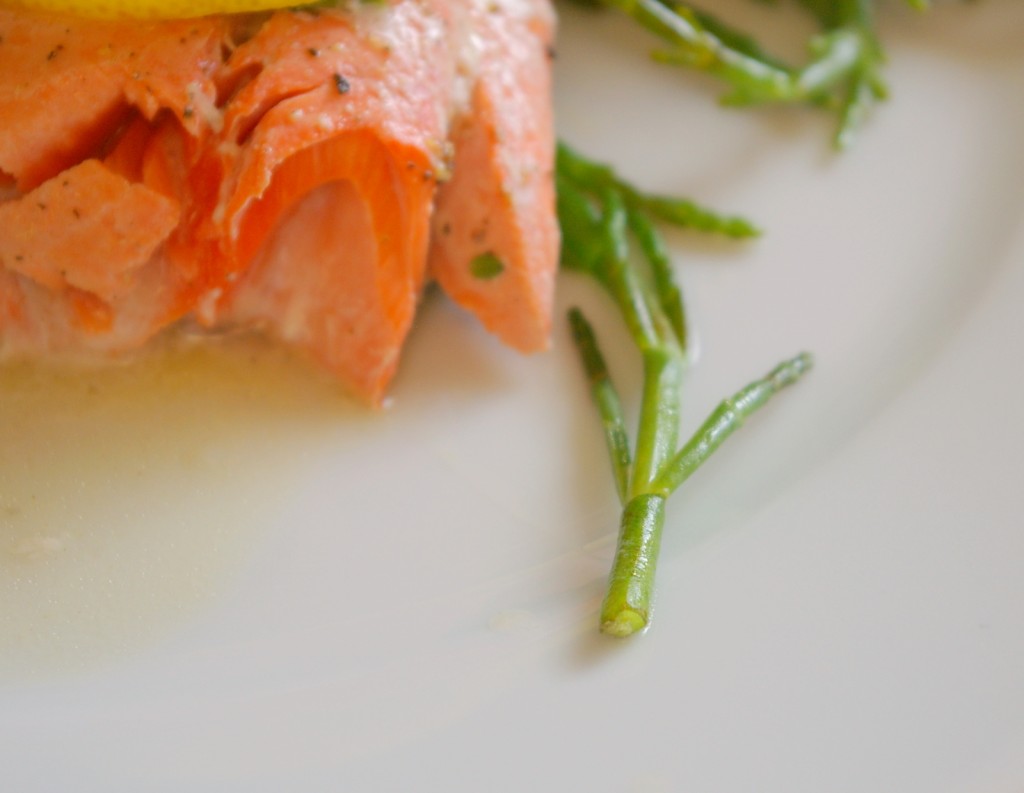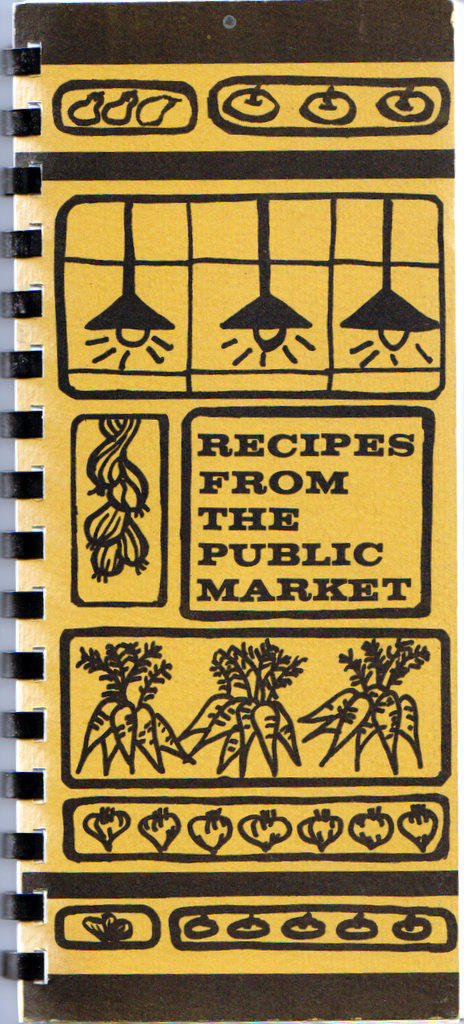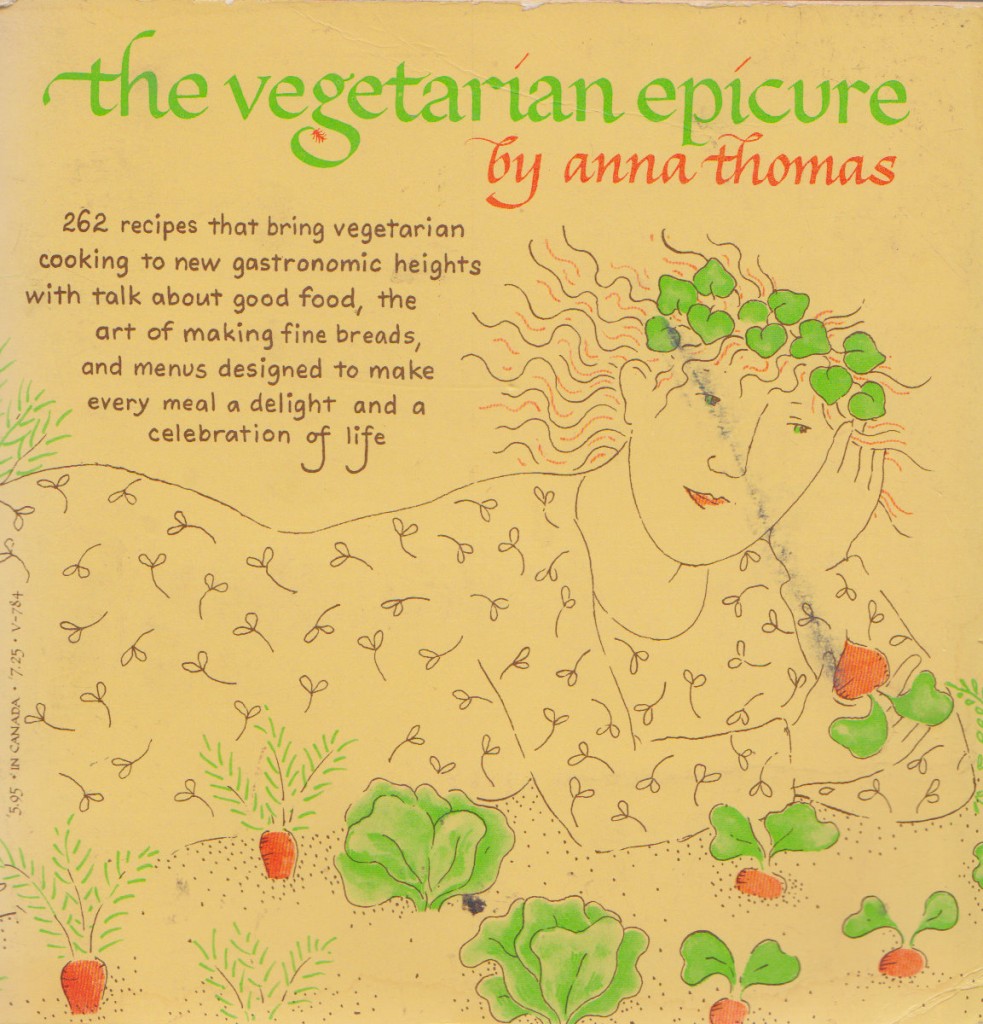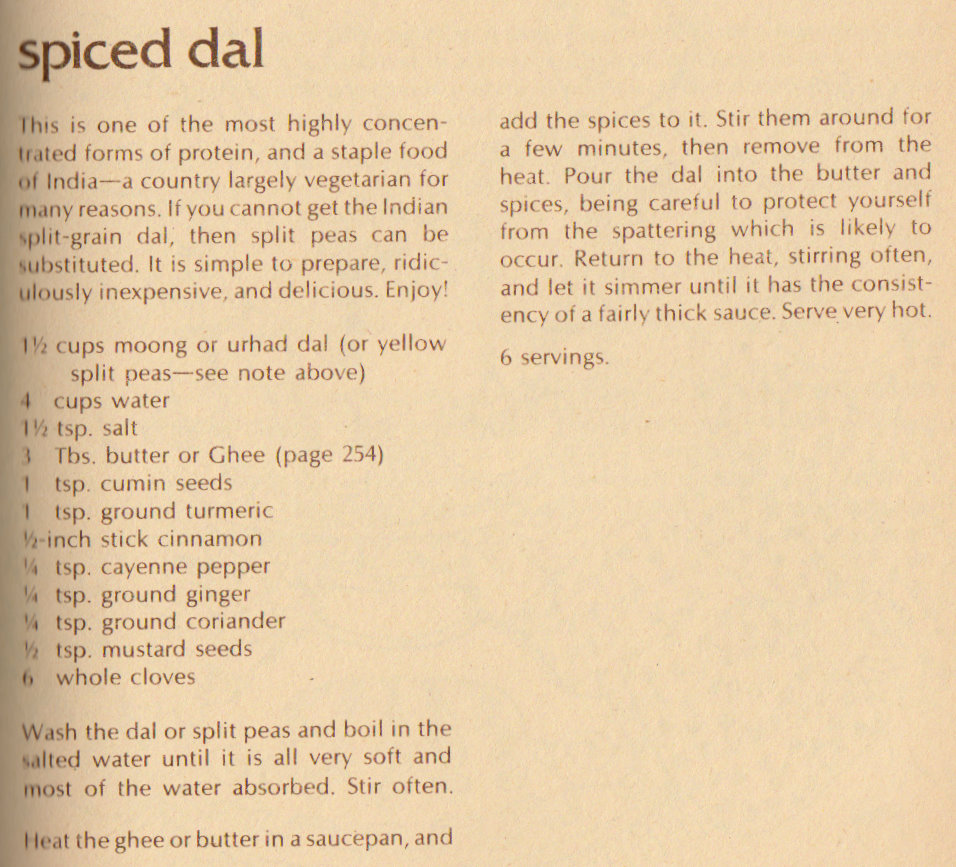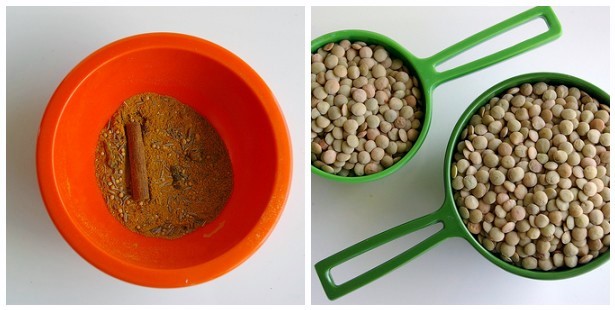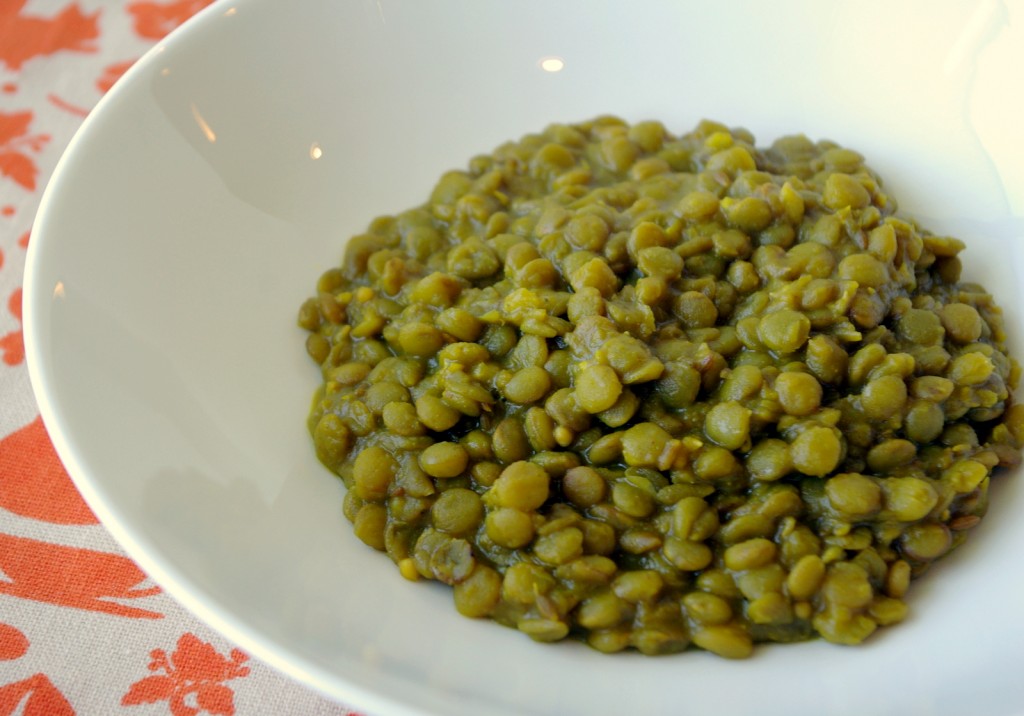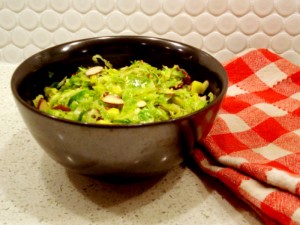Posts in Category: Veggies
A Few of My Favorite Things: Samphire
Two summers ago, I had samphire for the first time. Â I was a teaching assistant for a Shakespeare course and having a nice dinner in Stratford-upon-Avon and with a fellow T.A. when I bit into an an amazing, salty vegetable. Â My waiter called it samphire, which sounded delightfully exotic. Â Then I remembered watching King Lear the week before and hearing the lines:
Come on, sir; here’s the place: stand still. Â How fearful
And dizzy ’tis, to cast one’s eyes so low!
The crows and choughs that wing the midway air
Show scare so gross as beetles: half way down
Hangs one that gathers samphire, dreadful trade!
Methinks he seems no bigger than his head. (4.6.15-20)
Edgar says these lines to Gloucester as he peers over one of Dover’s cliffs and sees an unlucky man gathering Rock Samphire. Â Thus began my love of samphire!
The salty annual you see pictured above is Marsh Samphire, which grows as an annual in marshy regions of the United States and England. Â It’s best to forage samphire during the spring and summer, although I found these at the Ballard Farmer’s Market last weekend. Â In the U.S., samphire is called Sea Beans or Glasswort, but I still call it samphire (a derivation of Saint Pierre, apparently). Â It’s sometimes called Glasswort because it was used in glass-making because it was so salty.
Tonight, I sautéed some salmon and added the samphire for the last few minutes of cooking, just to blanch it.  It’s crunchy, salty, tangy, and a perfect accompaniment to seafood.  It’s gaining popularity right now in the culinary community, and I wouldn’t be surprised if you start to see samphire/sea beans/glasswort showing up under your seafood or pickled, in your bloody mary.  (The most common way to eat samphire in many vintage recipes is to have it pickled.)
Sautéed Samphire with Thyme and Vermouth
1 tbsp. butter
1 tbsp. olive oil
2 tbsp. vermouth
1 tbsp. chopped thyme leaves
3 cups samphire/sea beans/glasswort
salt and pepper to taste
a squeeze of lemon
1. Heat skillet and add butter. Â Stir until melted. Â Add olive oil and vermouth and stir until mixed.
2. Add samphire and thyme. Â Bring liquid to a simmer and cover with lid for 5 minutes.
3. Uncover and add salt, pepper, and a squeeze of lemon juice. Â Stir until samphire is well-coated.
4. Â Serve with seafood!
(I poached my salmon in the butter, olive oil, and vermouth mixture (along with a little water) and then added the samphire for the last 5 minutes!)
Date Night!
We have a tradition at Chez Butter that we’ve kept up for a while now. Â We both love to cook, but given our work schedules, we don’t often get a chance to cook together. Â So every now-and-then we’ll have a ‘date night’ in which we both cook something fun, go for a walk, and watch a movie.
At a local estate sale we picked up a cookbook created by the Friends of Pike Place Market in 1965.  It’s a tall and skinny cookbook, filled with recipes from the market’s vendors and devotees as well as local restaurateurs.
Two recipes in particular caught our eye, both by Peter Canlis, the founder of Canlis, one of Seattle’s most decorated (and arguably most picturesque) restaurants. Â We decided to try both recipes for our date night.
Vintage Vegetarian
When I started this blog, I was a little worried: “I don’t eat cans of cream of mushroom soup every day, how am I going to make this work?” Â Like most people, my perception of old recipes are those infamous concoctions like Tuna Casserole and Tamale Pie, not the ones that are passed down and reused silently from generation to generation. Â Looking back to my post from last week, I think Russian Tea Cakes are one of those silent recipes that has been brought to Christmas cookie exchanges and potlucks for years.
Kevin and I tend to eat a lot a lot of local produce, whole grains, and not much meat, which runs counter to our perception of ‘vintage’ food, I think. Â Enter The Vegetarian Epicure, published in 1972. Â I almost jumped for joy when I saw this book at a local thrift shop. Â Indeed, as I flip through its pages, I find that most of the dishes have a very contemporary ring to them. Â So in honor of breaking our preconceptions about vintage recipes, I bring to thee, Spiced Dal, a healthful, vegetarian, vintage recipe!
I followed the recipe quite closely although, I have to admit, I used generic lentils because I had them on hand.
The end product was a lovely and hearty dish with a wonderful depth of flavor. Â I added a squeeze of lemon juice to brighten it up a bit. Â Serve with rice, quinoa, or naan!
The Much-Maligned Sprout
I sing to thee of a humble sprout, made delectable with darkened butter, tart lemon, and toasted almonds!
Most everyone has bitten into an over-cooked Brussels sprout, ripe with glucosinolate sinigrin, which–according to Wikipedia–gives off a sulfurous odor and is probably the reason behind the widespread dislike of the poor little cabbage.  But cooked correctly, the Brussels sprout is a vegetable of an epic nature (hence my earlier invocation).  Indeed, Fanny Merritt Farmer includes Brussels Sprouts with Curry in her cookbook, Food and Cookery for the Sick and Convalescent, as an aid for diabetes.  Judging by the numerous recipes for Brussels sprouts available from the early twentieth century in Google books, they were quite popular.  In most of my mid-century cookbooks, nary a Brussels sprout is to be found, which makes me wonder if many 1950s cooks avoided them because of bad childhood experiences!
Then, as I mentioned earlier this week, I found my New York Times Cookbook. Â Claiborne has two recipes for Brussels Sprouts: one with caraway seeds and another with browned butter. Â He suggests that Brussels sprouts should be cooked whole, with a gash in the stem. Â I prefer slicing the sprouts ever-so-finely instead, so my take on his recipe reflects that. And apologies for the horrible photo — the whole bunch was a little off-color, even with correction.
Brussels Sprouts with Browned Butter and Toasted Almonds
(adapted from the 1961 New York Times Cookbook)
1 pound Brussels sprouts, finely sliced
2 tbsp. butter
1 tbsp. olive oil
2 tbsp. lemon juice
1/4 c. sliced almonds, toasted
salt and pepper to taste
1. Â Preheat oven to 350. Â Place almonds on a baking sheet and toast for 10 min.
2. Â Slowly melt 2 tbsp. of butter in frying pan and cook until just starting to brown.
2. Add olive oil and Brussels sprouts and sauté for 3-4 minutes.
3. Remove Brussels sprouts from heat and add lemon juice, almonds, salt and pepper.
Et voilà ! We had ours with some halibut poached in white wine and lemon juice.  It was a wonderful dinner!
Go visit Foodie Friday for more yummy recipes!
